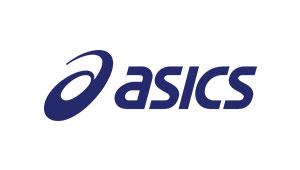Lunges
Instructions: Lunge forward with one leg. Focus on keeping your core muscles tight throughout the movement. Don't let the knee of your front leg bend past the tip of your toes. Advanced runners can perform this exercise holding a medicine ball and twisting when they bring their leg out for added difficulty. Work your way up to 15 repetitions on each leg.
The Achilles and Ankle Complex
The Achilles tendon is the thickest and strongest tendon in your body; it connects your calf muscles to the back of your heel.
The Role of the Achilles and Ankle Complex and Reasons for Injury
The key power generator at push off is the ankle joint and Achilles tendon, not the quads, which is a common misconception.
If we observe the ankle joint during a typical running stride, we can see clearly that it goes through an extensive range of motion. It helps the ankle joint and the connected ligaments and muscles act as a spring to generate power.
The Achilles transmits virtually all of the force generated when you toe off the ground during running—this force can be as much as three times your body weight. And the faster you run, the more strain you put on the Achilles tendon.
Therefore, the primary cause of injuries to the Achilles tendon is excessive stress, which can be instigated in three ways:
- improper running form: the Achilles tries to make up for a lack of power that should be generated from the hips and glutes during fast running
- weak tendon structure
- poor ankle range of motion.
How to Strengthen and Prevent Injuries
The main objective in strengthening the Achilles tendon should be to improve the strength and composition of the collagen, the small fiber-like proteins that make up tendons.
When a tendon is damaged, collagen fibers are ruptured. The body lays down new fibers to replace the damaged ones, but it does so in a rather disorganized way. The new collagen fibers look much like a mess of spaghetti when viewed on a microscope, in contrast to the smooth, aligned appearance of healthy tendon fibers.
Exercises that help strengthen the existing collagen and allow new collagen to form in a smooth, aligned manner are critical to maintaining Achilles tendon health.
The exercise of choice is the eccentric heel drop, which has an impressive research pedigree backing its use.
You should also improve your ankles' range of motion, and ensure that your hips, hamstrings and glutes generate the proper power in order to take pressure off the Achilles tendon.
The same exercises outlined above are sufficient to improve hip, hamstring and glute strength; here's how to perform the eccentric heel drop and ankle range of motion exercises.
Straight-Knee Eccentric Heel Drop
Instructions: Stand on a ledge, step, curb or other stable surface with your left foot raised up so you're balancing on the ball of your foot; bend the right leg at the knee. Slowly lower the left foot downward until your left foot hangs slightly below the ledge. To complete the rep, switch legs and raise your right foot up, and then lower the right foot until it hangs slightly below the ledge. That's one rep.
In this picture, the injured side is the left leg. Note that the right leg is used to return to the "up" position. Perform 15 to 25 reps.
Once you can perform this exercise pain-free, add resistance—place weights in a backpack, and wear the backpack on both shoulders.
Bent-Knee Eccentric Heel Drop
Instructions: Complete this exercise in the same manner as the straight-knee eccentric heel drop exercise, but just bend both knees. As with the first exercise, the opposite leg is used to return to the "up" position. Perform 15 to 20 reps. Add weight when you can perform the exercise pain-free.
Final Thoughts
Think prehab as opposed to rehab.
If you add strength training to your weekly training program, you can reduce your risk of injury by 50 percent. Most runners only include strength work after they get hurt, and when they return to running, they sacrifice the strength work that got them healthy for adding more miles.
Consider the routines and information I've presented in this four-part series, and make running-specific strength training a part of your routine so you can stay healthy and train more consistently.
Check out the previous three articles in the Building a Better Runner series, which outline the importance and function of the core as well as how the hips, hamstrings and glutes work together to generate power from your running stride, and four ways to treat and prevent shin splints.
More Training and Injury Prevention Article:
How Runners Can Prevent Achilles Tendon and Calf Injuries
Strength Train to Improve Running Economy
10 Self-Myofascial Release Exercises for Runners to Prevent Injury
9 Single-Leg Exercises to Prevent Running Injuries
How to Treat and Prevent Running Injuries: Achilles Tendonitis
 Sign up for your next running race.
Sign up for your next running race.- 2
- of
- 2
About the Author
Get ACTIVE on the Go


Couch to 5K®
The best way to get new runners off the couch and across the finish line of their first 5K.
Available for iOS | Android







Discuss This Article